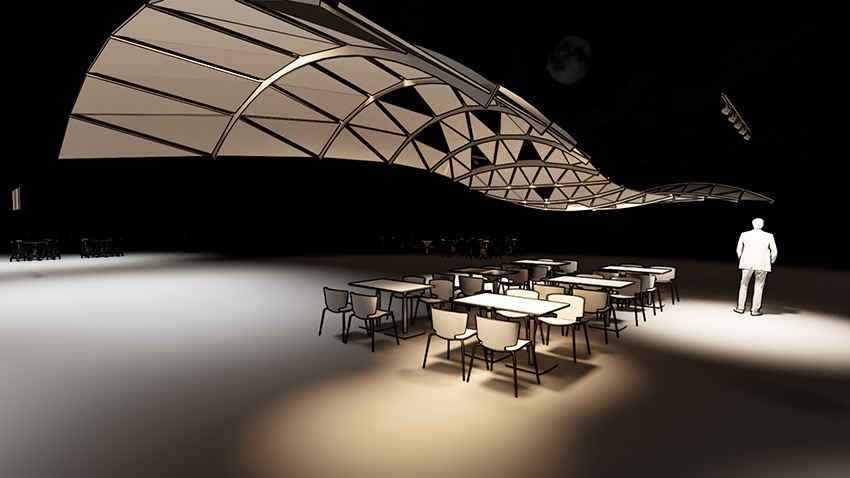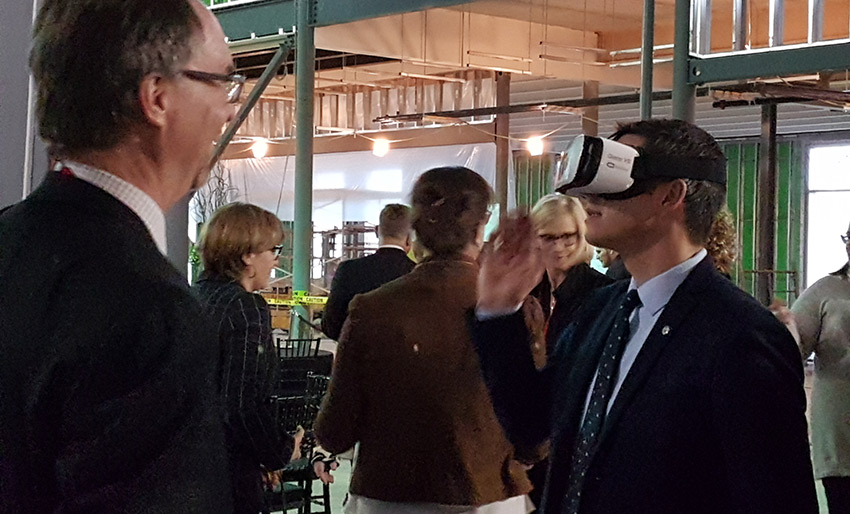
Guest blog by Veronica Neufeld
While the potential benefits of industry-changing technologies are tremendous, so too are the challenges of integrating them into our daily working lives. ‘Disruptive’ innovations may be perceived as risky or even threatening by traditional industries and organizations. Number TEN Architectural Group partner and practice leader Greg Hasiuk argues that it is the responsibility of industry leaders to seek to better understand and embrace innovation, or risk being left behind.
These days, it is difficult to name an industry that has not experienced some moderate to major disruption as a result of new digital technology. The architecture and construction industries are no different. In February of 2017, Hasiuk attended the Canadian Construction Innovation annual general meeting in Toronto, where the latest leading-edge technologies were given the spotlight. What is in store for Canada? He reports that big data, artificial intelligence and virtual reality (VR) are some of the trends to follow.
Image: The emergence of parametric design is demonstrated in this feature ceiling concept, modeled with Revit building information modeling (BIM) software
Big data refers to large, complex data sets that may be analyzed computationally through machine learning to reveal patterns, trends and associations, especially relating to human behavior and interactions.
“In architecture and construction, we have essentially been working the same way for hundreds of years,” Hasiuk says. “Generally, all project information – including data on energy costs and efficiency, building materials, land use, social behaviours and area stats – is kept in separate information silos by each discipline working on the project. Big data and artificial intelligence introduces a paradigm shift, where everyone involved is much more integrated and communicative, working together with shared data to solve the problem.”
Harnessing the power of big data will enable architects and construction teams to gather and analyze information in real-time, resulting in improved team efficiencies, and more accurate fixture specifications and cost projections. This will help teams on-site to better plan, coordinate and execute their work, with fewer misunderstandings and false starts. Building owners and clients will be able to receive more accurate and timely estimates on project costs and schedule performance.
“As architects, the ultimate goal is to create the best possible place for people,” adds Hasiuk. “If you’re trying to do that, having access to better information and decision making will enable us to make spaces more aesthetically pleasing, energy efficient and functional. We will be able to help our clients make better use of a site by analyzing human behavior and social patterns, including pedestrian and vehicular traffic, purchasing behaviours, transit activity, even crime statistics. Information, and the ability to filter and analyze massive amounts of it, is the path to knowledge and good decision making in our industry.”
Another industry-changing technology gaining momentum is virtual reality. In April, Number TEN was on-site at a construction tour event at the partially-constructed Red River College Skilled Trades and Technology Centre. At Number TEN’s VR demonstration station, over 300 project stakeholders in attendance had the opportunity to view a three-dimensional representation of the finished space superimposed over the construction area. The VR display was a popular attraction at the event, and viewers expressed excitement as they explored the virtual space and took in what the new building will look like when it opens in 2018.
Image: Number TEN partner Doug Hanna shows Winnipeg mayor Brian Bowman some VR technology at the Red River College Skilled Trades and Technology Centre construction site.
“Virtual reality provides a whole new level of visual information, so we can put our teams and clients directly into the space,” Hasiuk says. “Owners and stakeholders can see return on their investment more quickly and it reinforces what they paid into.”
The technology also allows for better and more cost-effective decision making, as clients and architects can more effectively anticipate potential issues before construction.
”Embracing the use of innovative technology is critical for Canada’s architecture and construction industry to succeed in a competitive global market. Number TEN is determined to remain ahead of the curve through the early implementation of new technologies that improve and build upon our design delivery process.”